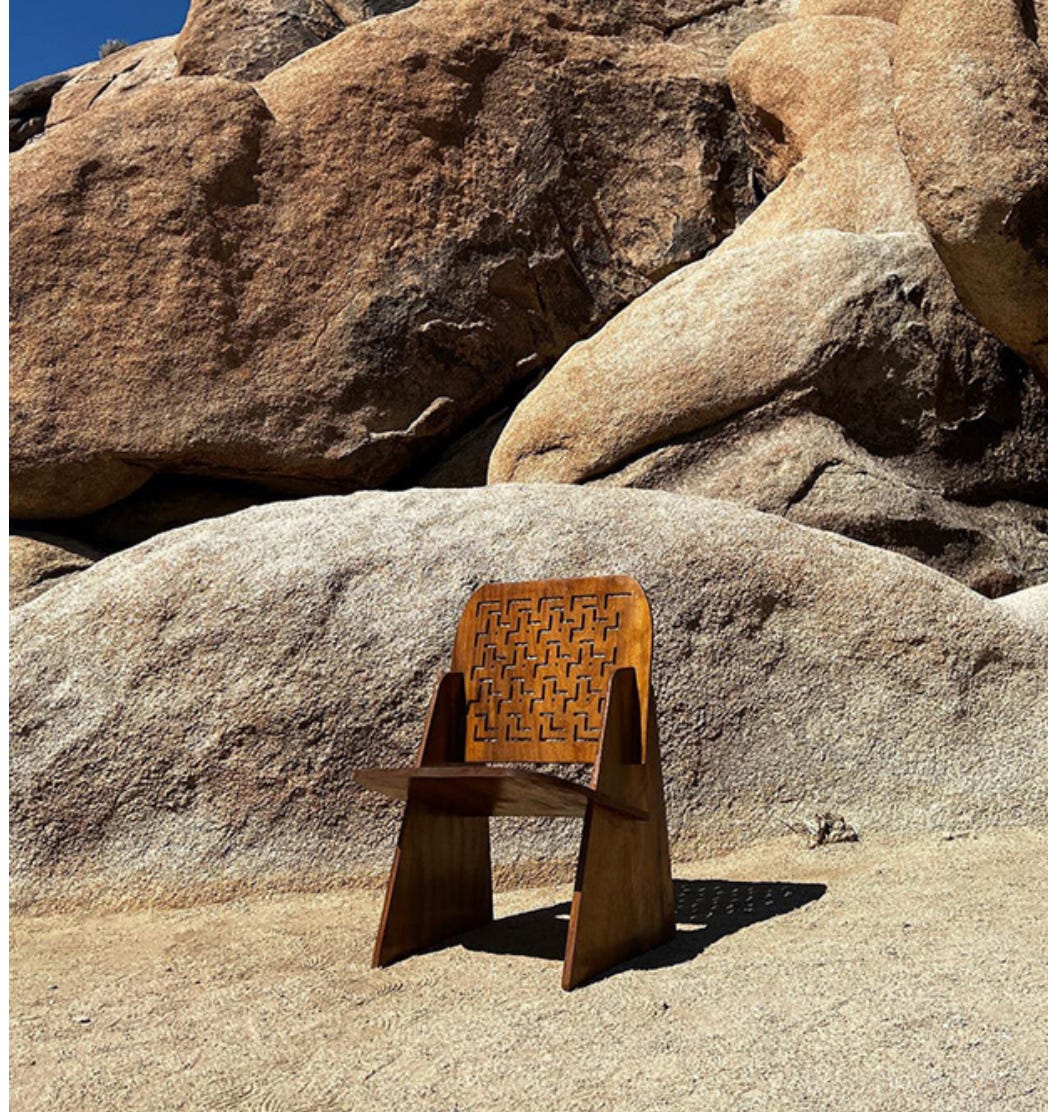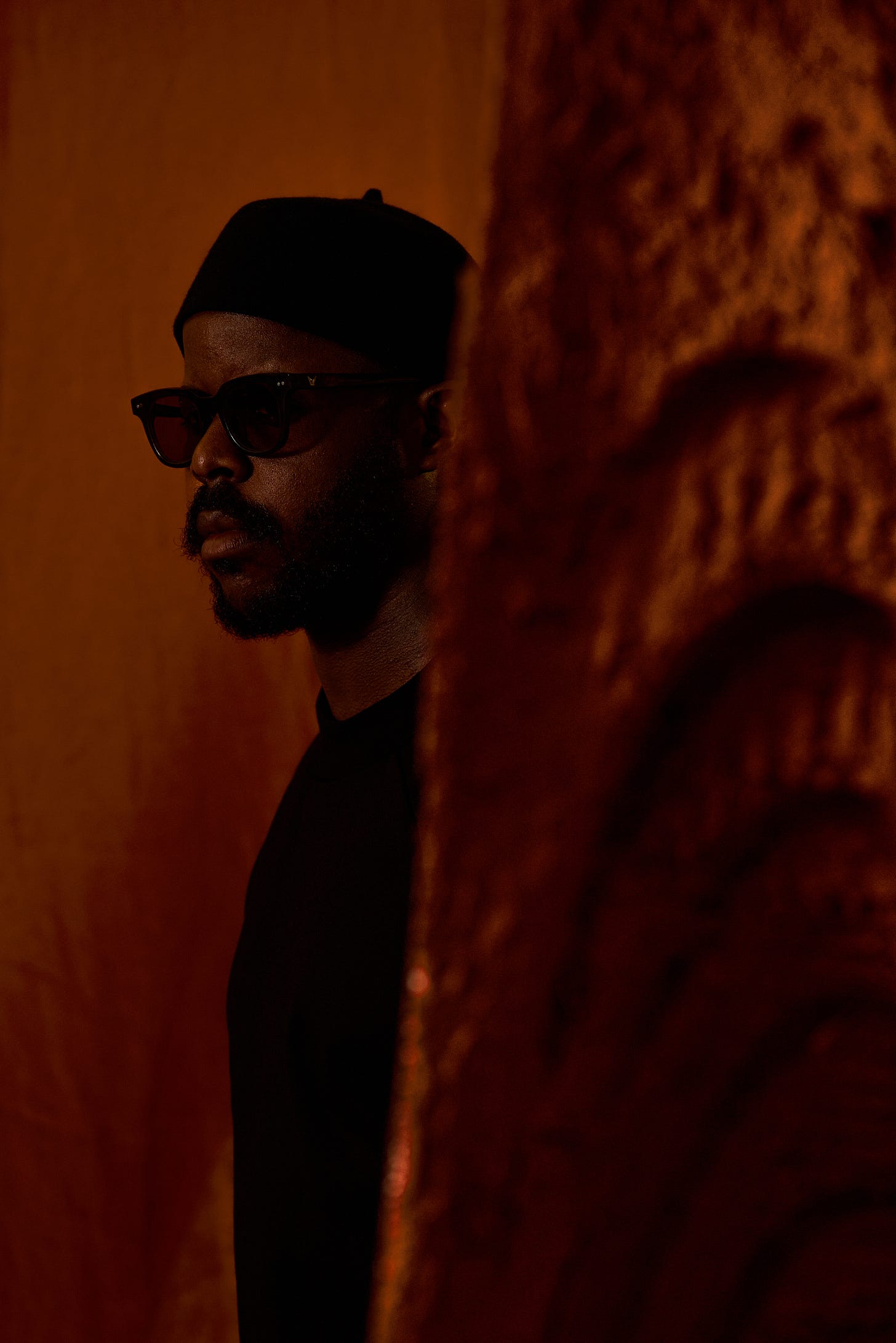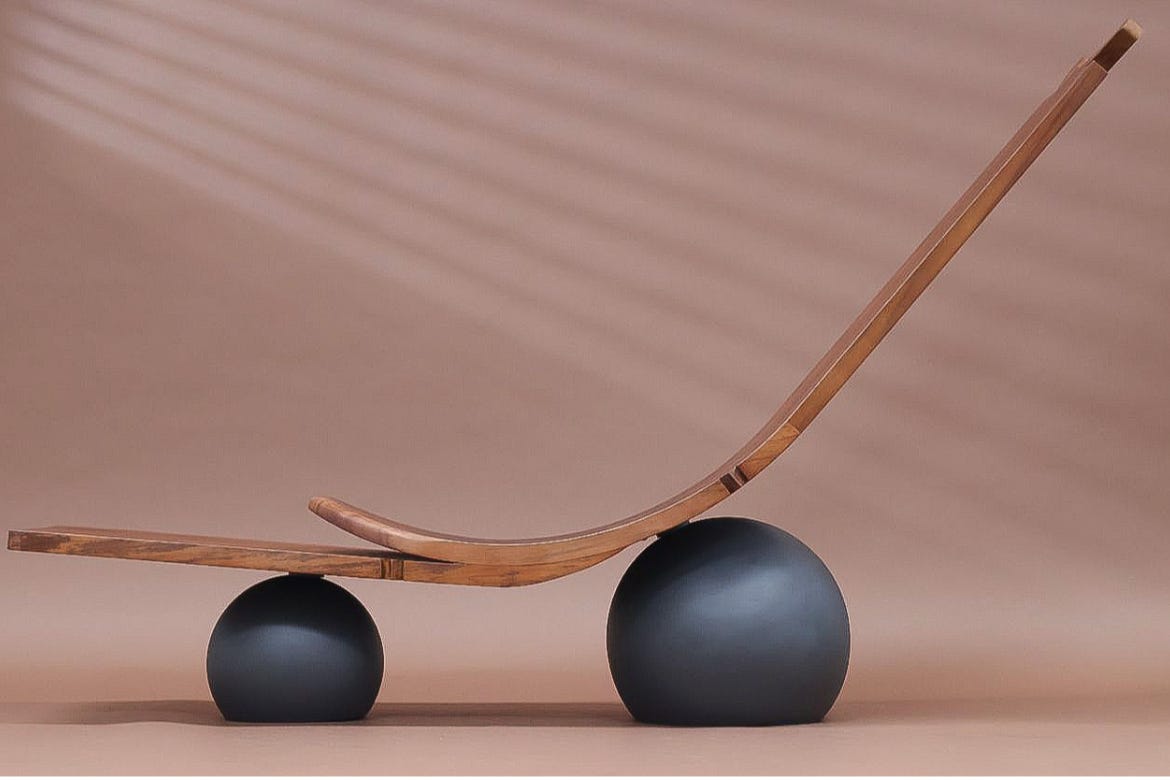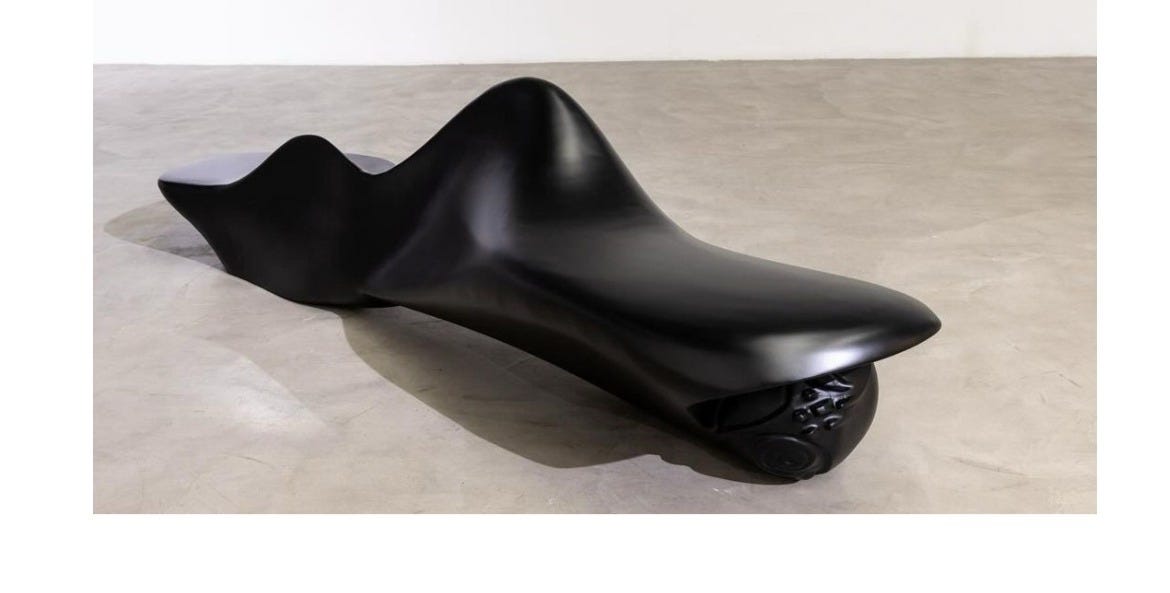Nnọọ!
It has been more than a week of full-strength sunshine in London, and I can’t think of any city that transforms so dramatically in the rare event of consistent sunshine. Everyone is outside. Shelves are stripped bare (booze and charcoal), and bodies are stripped of clothes - the vibe is frisky. Living in New York has made me more appreciative of London’s transport system. Sure, being parked in someone’s armpit at rush hour on a crowded Central line is no fun, but I will take that over the aggressively air-conditioned, anything-can-happen energy of the New York subway.
Amongst other things, my London adventures took me to the London Design Biennale at Somerset House. It posits itself as ‘a global gathering of ambitious and imaginative designers, curators and design institutes’. It runs over three weeks, which for me was a bonus as I went twice, and each time I could stroll from room to room without bumping elbows.
One of the main draws for me was Myles Igwebuike, a Nigerian artist, designer and founder of Nteje Studios. A few years back, Myles made a bold move. He left a “great job” in finance, turned down an MBA offer and moved to London to study Design Product at the Royal College of Art.
Since graduating, Myles has founded his own practice and gained global recognition for his designs, which often pay homage to Igbo identity and traditions. His Ozo chair, for example, is a reference to the traditional hierarchical system of Igbo people.

There is a quote from an interview I did with Myles a few months ago, which I feel speaks to his ethos and approach as a designer:
I am truly excited about the little things, such as the functionality of my doorknob or the way my shower gel turns into lather, because these small details inspire design concepts. It inspires form. It inspires methodology. Design isn't just object-based. Design is a way of life, and it's about thinking about the role I play in creating the life I live. But then also looking at what it would look like to create, not necessarily a perfect life, but a utopia. I'm always thinking about the future, what can be and what should be.
Given how future-facing Myles’s work is, I was keen to see how he would execute his vision for the Nigerian pavilion. So today we’re trying something a little different. I am jettisoning the usual Q&A for a video of Myles showing us around his pavilion.
*A quick disclaimer. I’m travelling, so I edited the video on the fly. The edit is best described as ‘art-house’ or cinema verité. It also has a squeaky wooden floor and some loud external sounds as supporting characters.
The London Design Biennale is on until the 29th of June. You can find out more about it here and follow Myles here. Keep an eye out for his upcoming collaboration with Masongi, a master woodworker based in Angola.
Creatives Myles thinks you should know
*Lulama Wolf - “I love the way she interacts with colour and tells really interesting stories through silhouettes and colour schemes.”
*Tosin Oshinowo - “I love how she's been able to rethink urbanisation and urbanism within the Global South.
Recommendation of the Week
If you have ever wanted to find out what music was playing on the radio in Liberia in 1970 or Botswana in 1999 then Radiooooo is the musical time machine you want. It’s an excellent vehicle for music discovery around the world. You do now have to sign in to try it out, but it’s worth it, and it remains one of the few good places left on the internet.
Thanks to everyone who has reached out with comments, messages and restacks. I read and see them all, and I appreciate them.
Next week: a Zimbabwean CYSK!
See you in the comments!








loved this!
That Ozo chair is total 🔥🔥🔥